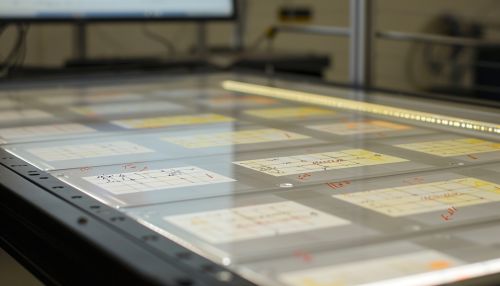Row Operations in Linear Algebra
Introduction
Row operations are fundamental procedures in linear algebra that are used to simplify matrices and solve systems of linear equations. They are a key concept in the study of linear algebra and are used in various fields such as computer science, physics, and engineering.
Basic Row Operations
There are three basic types of row operations:
1. Row swapping: This operation involves interchanging two rows in a matrix. For example, if we have a matrix with rows R1, R2, and R3, we can swap R1 and R2 to get a new matrix with rows R2, R1, and R3.
2. Row multiplication: This operation involves multiplying all entries in a row by a nonzero scalar. For instance, we can multiply all entries in R1 by 2 to get a new row 2R1.
3. Row addition: This operation involves adding or subtracting a multiple of one row to another row. For example, we can add 2 times R1 to R2 to get a new row R2 + 2R1.


Row Echelon Form and Reduced Row Echelon Form
Row operations are used to transform matrices into simpler forms, namely the row echelon form (REF) and the reduced row echelon form (RREF). These forms are useful for solving systems of linear equations and finding the rank and nullity of a matrix.
1. Row Echelon Form (REF): A matrix is in REF if it satisfies the following conditions:
* All nonzero rows are above any rows of all zeros. * The leading coefficient (the first nonzero number from the left, also called the pivot) of a nonzero row is always strictly to the right of the leading coefficient of the row above it.
2. Reduced Row Echelon Form (RREF): A matrix is in RREF if it satisfies the conditions for REF and two additional conditions:
* The leading coefficient in each nonzero row is 1. * Each column that contains a leading 1 has zeros everywhere else.
Applications of Row Operations
Row operations are used in various applications in linear algebra and beyond. Here are a few examples:
1. Solving Systems of Linear Equations: Row operations are used to transform a system of linear equations into a simpler form that can be easily solved.
2. Determining the Inverse of a Matrix: If a matrix is invertible, row operations can be used to find its inverse.
3. Computing the Rank and Nullity of a Matrix: The rank of a matrix is the maximum number of linearly independent rows, and the nullity is the dimension of the null space. Both can be determined using row operations.
4. Linear Programming: Row operations are used in the simplex method, a popular algorithm for solving linear programming problems.
Conclusion
Row operations are a fundamental concept in linear algebra with wide-ranging applications. By simplifying matrices and systems of linear equations, they provide a powerful tool for solving complex problems in various fields.
